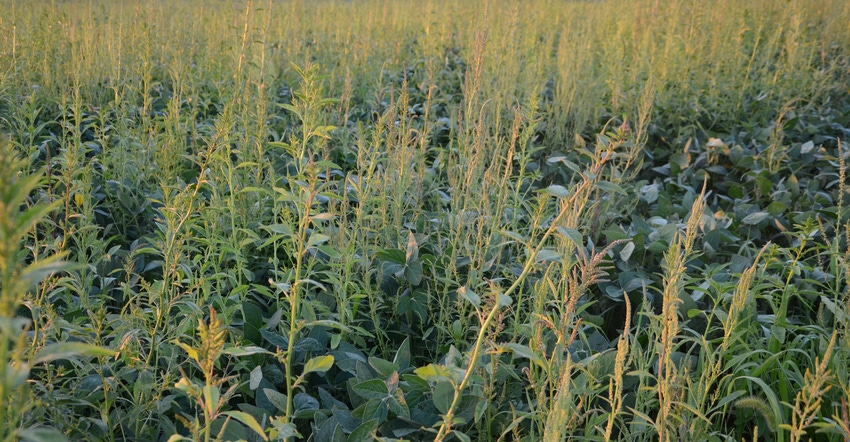March 13, 2019

According to Dan Childs, weed management specialist for Bayer Crop Science, there’s a new “Public Enemy No. 1.” It’s waterhemp, and it’s wanted for a wide swath of crimes against row crops across the Midwest. It’s been very elusive of attempts to take it out.
“We’ve abused our herbicides by overusing them, and now across Indiana, Illinois and Ohio, we have widespread herbicide resistance, and it’s continuing to get worse. With waterhemp, many biotypes are now resistant to at least two modes of action. And in Illinois, they’ve found one biotype resistant to six modes of action.”
Childs says any new mode-of-action products are at least 10 years away, making it imperative that crop producers do everything possible to hold further herbicide resistance at bay.
Key strategies
To keep waterhemp, Palmer amaranth, marestail and other troublesome weeds from “turning your crops into a train wreck,” Childs recommends these six practices.
1. Rotate modes and sites of action. Go by the site-of-action number on the label, and shoot for multiple sites of action, preferably four to five different SOAs. “If you continue to use the same numbers over and over, you will very quickly develop resistance,” says Childs.
2. Remember timing is critical. Kill weeds sooner than later. To kill Palmer amaranth weeds with a postemergence application, spray them at no more than 4 inches tall. And since Palmer can grow 2 to 3 inches per day, you have to target them at 2 inches to make sure you get them by 4 inches, Childs says.
3. Follow appropriate cultural practices. Methods for controlling weeds aren’t limited to chemicals. Cultural practices like narrowing rows and using tillage or cover crops can be a huge help. Stepping up your crop scouting for emerging weed problems can also pay big dividends.
4. Practice effective chemical application. Any chemical weed management approach must have three components to be successful. First, start clean. “Whether with tillage or burndown, you can’t plant into a weedy mess anymore,” Childs says.
Second, use a good preemergence herbicide at planting. “When Roundup came along, we stopped using those,” he says. “But we need to go back and start using them again, using at least two sites of action to give residual control for 30 days or so to allow soybeans or corn to canopy.”
Third, follow up with an early postemergence application, accompanied by a second residual herbicide, again targeting weeds when they’re small. This will provide effective residual control through canopy closure.
5. Use other interventions. In today’s herbicide-resistant environment, don’t totally rule out hand weeding. “About three years ago, I noticed about six waterhemp plants sticking up above the beans in my neighbor’s field next to my test plot,” he says. “I thought I’d be nice and pull them. After I got into the field, I found hundreds, and spent about an hour pulling them up. But since then, I haven’t seen any waterhemp in that field. If I hadn’t done that, he’d have had a mess.”
6. Consider cover crops. In his no-till soybean trials, Childs has had some encouraging results using cereal rye, including planting into standing cereal rye, then crimping the cover crop during the flowering stage. He says cereal rye has been relatively easy to manage and effective in helping suppress weeds. The beans have outyielded his other trials.
Boone writes from Wabash, Ind.
About the Author(s)
You May Also Like






